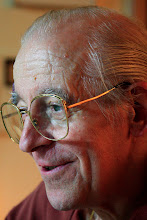The word madame in French is derived from the Latin mea domina (my mistress) of the home. In the past, it referred to a lady. In 17th and 18th century France, noblewomen nurtured a distinctive culture—a salon culture—by opening their living rooms, or salons, to intellectuals. They invited poets, scholars and artists to their salons for discussions on reality and the arts, and offered to provide them with financial support if necessary. They hosted many writers, including Jean-Jacques Rousseau (1712-1778), the enlightenment philosopher, as well as painters and musicians. In the true sense of the word, they were the original ‘ladies of leisure’.
In Korea, it is not clear when the word ‘lady of leisure’ was first used. In 1935, when Korea was under Japanese occupation (1910-1945), Samcholli Magazine (삼천리문학, The Korean Literature) reported on the opening of the modern Hwasin Department Store (화신백화점), the first department store in Korea that was located on the spot where the Chongno Tower now stands: “Many people in Seoul, ranging from ladies and ‘ladies of leisure’ to wealthy people without jobs, gathered like clouds.” Although it was a common moniker, it seems that it was not synonymous with self-indulgence and vanity.
In Korea, it is not clear when the word ‘lady of leisure’ was first used. In 1935, when Korea was under Japanese occupation (1910-1945), Samcholli Magazine (삼천리문학, The Korean Literature) reported on the opening of the modern Hwasin Department Store (화신백화점), the first department store in Korea that was located on the spot where the Chongno Tower now stands: “Many people in Seoul, ranging from ladies and ‘ladies of leisure’ to wealthy people without jobs, gathered like clouds.” Although it was a common moniker, it seems that it was not synonymous with self-indulgence and vanity.

Hwasin Department Store (1970s)
The label underwent a significant change after Korea was liberated from Japan. In the short story, Two Bankruptcies, novelist Yom Sang-sop (廉想涉, 염상섭, 1897-1963) wrote: “Her appearance was that of a ‘lady of leisure’ of a rich man, as she had her hair curled nicely, wore light makeup and held a shiny US-made handbag tightly under her arm.” Novelist Chong Pi-sok (1911-1991) later wrote in his novel, Madame Freedom, that “a modern woman who wears new dresses, smokes cigarettes and enjoys dancing at a ball” was a ‘lady of leisure’.
Even after that, the negative image of the ‘lady of leisure’ did not change. In a December 20, 1969, article titled, Twenty-two Gamblers Including a ‘Lady of Leisure’ Arrested, the conservative daily JoongAng Ilbo (中央日報, 중앙일보) reported that “a ‘lady of leisure’ is intelligent in general and belongs to the upper-middle class.” At that time, headlines such as: Jewellery Smuggling Ring Including a ‘Lady of Leisure’ Arrested or Robbers Disguised as ‘Ladies of Leisure’ Lure Drunkards were common. In the 1980s and 1990s when the fever of real estate development swept the Kangnam-ku (江南區, 강남구) area, the ‘lady of leisure’ became a ‘lady of fortune’. And what will our ‘lady of leisure’ look like in the 21st century?
Kim Song-ju (1956- ), chairwoman of Sungjoo D&D, recently provided a clue when she said, “I have a sinking feeling when I see high-class women gathering at luxury restaurants in the morning, idling away their day chatting and pondering where to go to shop and have fun.” It is obvious that these women, no matter how well educated, think nothing of patronising luxury restaurants and spending time shopping. But I look forward to seeing the arrival of a new kind of ‘lady of leisure’, one who devotes her spare time to the development of society.
Giorgio Olivotto
Seoul, Korea
August 22, 2010
Seoul, Korea
August 22, 2010

Nessun commento:
Posta un commento